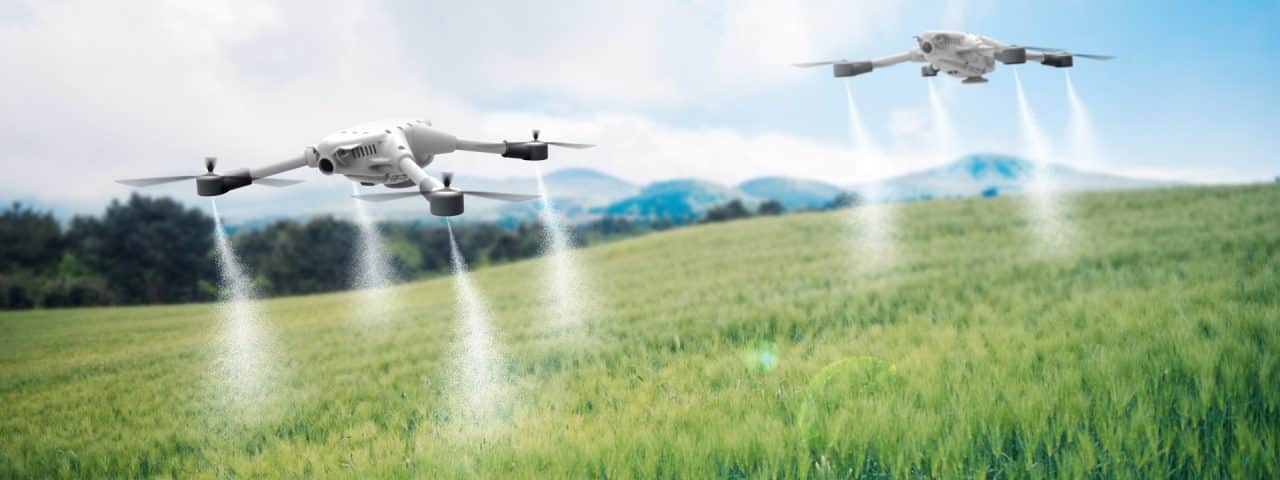
Technology is helping farmers feed the world. It can also make agriculture more environmentally friendly – for conventional and organic farmers alike
By Kelly Oakes, the Technologist
Replacing tractors, robots can cut a farm’s carbon footprint by 90%. They feed and spray only the plants that need it. Thanks to plant phenotyping, French researchers give farmers as much information as possible about a crop before they plant it.
Drones tackling weeds, satellites monitoring crops, and even robots testing whether grapes on the vine are ready for harvesting – these futuristic scenarios are already in use in farms across Europe, and not a moment too soon. A 2009 UN report predicted that by 2050 food production would have to increase by 70% to support the planet’s growing population. To do that, the world’s farmers will need all the technological help they can get.
At the same time, the planet is struggling under the weight of climate change and shrinking biodiversity, so the ecological footprint of any new technology can no longer be an afterthought.
The ecological footprint of organic agriculture has historically been better than that of conventional farming because it avoids chemical pesticides. But farmers embracing new technologies, known as precision agriculture, are making improvements, too. A 2015 study published in the Journal of Environmental Economics and Policy showed that automatic steering on tractors reduced a Kentucky corn and soybean farm’s carbon footprint by more than 2%. That may not sound like much, but it’s only one measure. Multiplying precision-agriculture techniques over an entire industry will make a big difference.
“Precision farmers are generally more technology-oriented than organic farmers, whereas organic farmers are generally more oriented towards working with nature,” says Lijbert Brussaard, professor emeritus of Soil Biology at Wageningen University & Research in the Netherlands. “But there are no fundamental reasons why this should remain so.”
Brussaard points out that precision-farming techniques could just as well be applied to the mixed or strip cropping (two or more crops grown in the same field) employed by organic farmers. “Precision farming could greatly relieve weed control in organic agriculture,” he says.
Robots of all kinds could be useful to conventional and organic farmers alike. Swiss company Gamaya, a spin-off from École Polytechnique Fédérale de Lausanne, uses drones to image fields not just in visible light but in all electromagnetic wavelengths. The data is combined with that collected from on-the-ground sensors and satellite images, then analysed using machine learning to show farmers exactly what’s going on in their fields.
The Small Robot Company, based in Bristol, UK, gets a bit closer up and personal with crops: roaming over fields to digitise them, using a precision-sprayer to cut down on fertiliser for plants and pesticide for weeds, and “punch-planting” crops.
“Most farmers would like to be better stewards of the environment,” says Benn-Scott Robinson, co-founder of the Small Robot Company. But traditional machines like tractors have not given them much choice.
By replacing tractors and eliminating the need to plough a field because the soil is not compacted in the first place, Robinson says the company’s robots could cut a farm’s carbon footprint by 90%. Chemical usage could also be cut by 95%. “They will feed and spray only the plants that need it, giving them the perfect levels nutrients and support, with no waste,” he explains.
The company’s field digitising robot is currently being tested at 20 farms around the UK, and they plan to expand the trial with planting and weeding robots in 2019.
“The prospects of light robots to take over in weed control look bright,” says Brussaard. “The future is in lighter machinery anyway, also to prevent soil compaction.”
While some new agricultural technologies focus on gathering data in the fields, others want to optimise the plants themselves. Technologies like the Plantix app, developed by Berlin-based start-up PEAT, use machine learning to detect plant diseases. Launched in 2015, the app now has more than 600,000 users worldwide. “Users can upload images of diseased plants, which are then matched with a server image and a diagnosis of the plant’s health is provided,” says Dan Pitchford, founder of the magazine AI Business. “With up to 30% of yields lost due to disease, PEAT has the power to improve agricultural outputs by just as much.”
Plant data
But what if farmers could choose plants less susceptible to a particular disease in the first place? Plant phenotyping uses technology to give farmers as much information as possible about a crop before they plant it.
Emmanuel de Langre, professor of mechanics at École Polytechnique near Paris, and his co-workers have created a system that tests the mechanical strength of a plant using fast puffs of air and video analysis. “There’s plenty of things that you don’t see otherwise that you might see this way,” he says.
If a plant isn’t getting enough water or has been infected by a pathogen, for example, its strength will drop before it starts to wilt. By testing hundreds of individuals from several key varieties of plants, de Langre and other researchers working on plant phenotyping are building datasets that could help farmers make the most of their crops.
This information will complement the environmental data farmers are getting on soil quality and local weather. “They cannot use that effectively if they don’t have good data on the performance of plants under these conditions,” says de Langre. “You don’t try to push the plant too much to go outside of its usual way of growing. You just try to get data so that the right plant is used in the right place at the right time.”
This article was first published on ‘The Technologist‘ and was republished with permission

